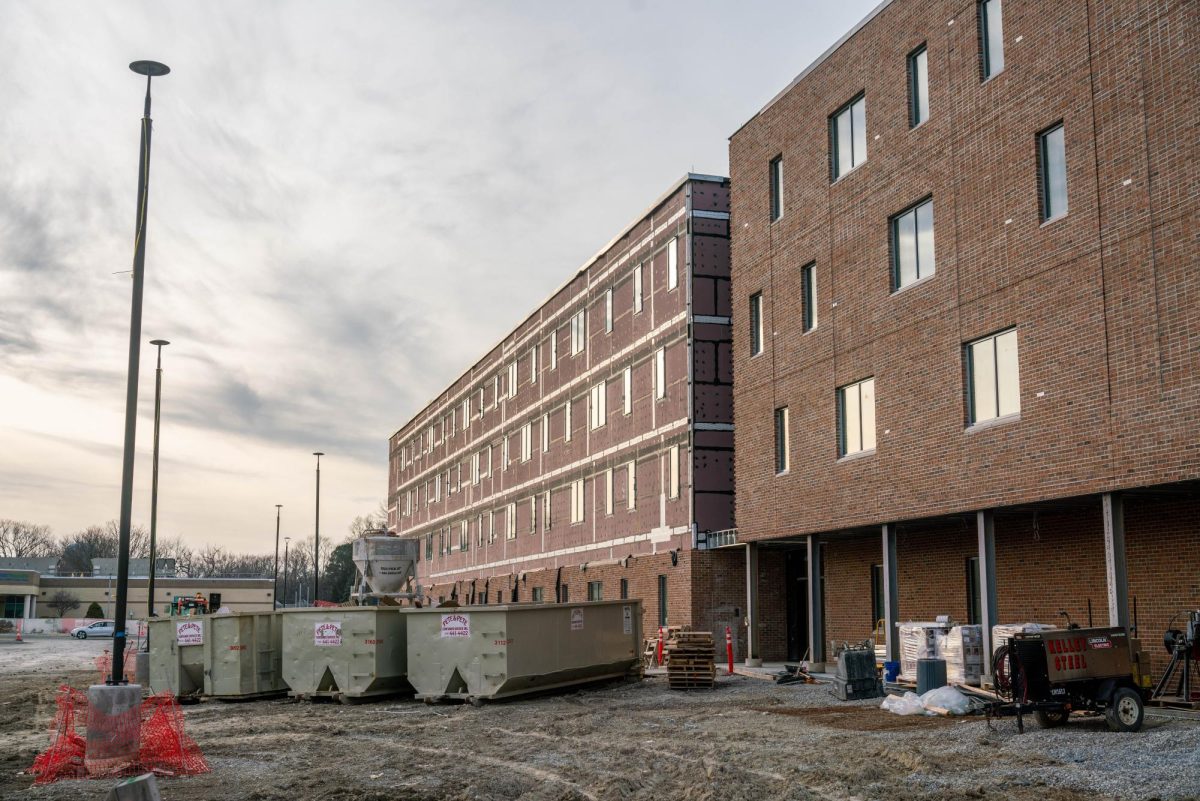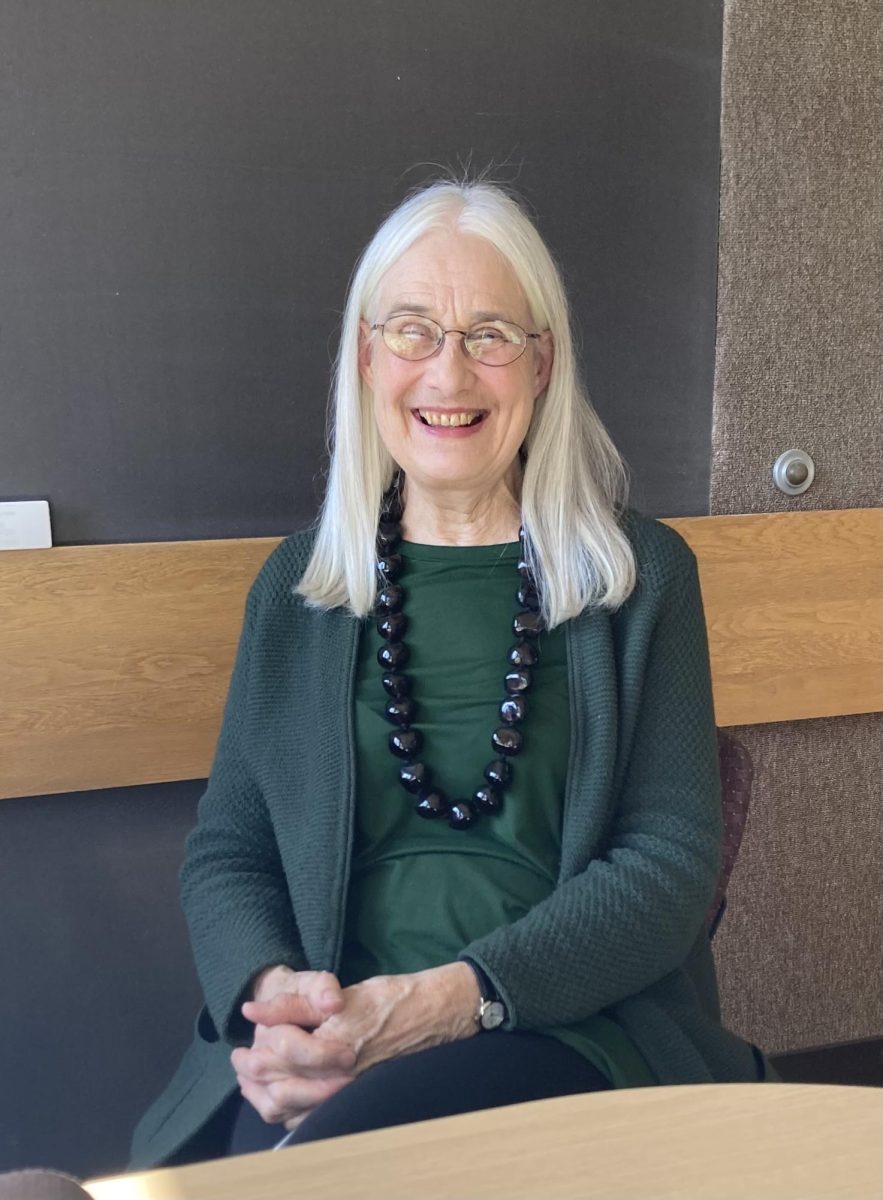On Monday, Cleveland public broadcaster Ideastream’s Sound of Ideas program held a public panel on Issue 1 at Oberlin’s Dye Lecture Hall. The event, which drew around 150 people, was broadcast on WKSU 89.7 Thursday morning and evening. Speakers discussed the legal, political, and social ramifications of Issue 1, which appears on ballots in Ohio this election.
The ballot measure, designed by the political action committee Citizens Not Politicians, seeks to prevent gerrymandering in Ohio by replacing politicians with non-elected citizens as decision makers in the redistricting process.
Speakers at Monday’s event included Jen Miller, executive director of the League of Women Voters of Ohio; David Arredondo, former Lorain County Republican Party executive chairman; Assistant Professor of Politics Ali Masood; and Ohio Statehouse Bureau Chief Journalist Karen Kasler. Miller served as an advocate for Issue 1 and Arredondo voiced opposition to the measure. Masood provided background to the history of judicial rulings on gerrymandering, while Kasler explained the political context within Ohio politics.
If passed, Issue 1 will create a 15-person body of non-elected citizens with five Republicans, five Democrats, and five independents that will set the boundaries of the Ohio State Senate, Assembly, and U.S. congressional districts. Issue 1 is backed by prominent groups such as the Democratic Party, the Libertarian Party, the League of Women Voters, and the NAACP.
The 15-member electoral commission proposed by Issue 1 would replace the Ohio Commission of Redistricting, which has set the boundaries of Ohio State Senate and General Assembly districts since 2015 and Congressional districts since 2018. The 7-member OCR currently consists of Republican Governor Mike DeWine, Republican Secretary of State Frank LaRose, and Republican Auditor Keith Faber as well as two Republican and two Democratic legislators.
The Democratic Party and independent observers, including the Brennan Center for Justice, have accused Republican Secretary of State Frank LaRose of attempting to defeat Issue 1 by crafting a misleading description of Issue 1 on the ballot. On the ballots sent to Ohio voters, voting “yes” on Issue 1 is described as voting to require gerrymandering.
“There was, in my opinion, a concerted effort to put language together that would mislead voters,” Democratic state Senator Paula Hicks-Hudson said in an interview with WTOL.
According to WTOL, the misleading language of Issue 1 has led some Ohio residents to vote against the measure despite signing the Issue 1 petition.
At Monday’s event, Miller argued that politicians should not be allowed to design their districts.
“There are simply too many incentives preventing politicians from fairly drawing the districts,” Miller said.
Arredondo argued that voters should reform the existing system later on rather than voting in a new complicated system that they may not completely understand.
“If you don’t know, vote no,” Arrredondo said.
Moreover, Ohio Republicans have strongly objected to Issue 1 by emphasizing that members of the proposed 15-member electoral commission can only be removed by the vote of nine members. Arredondo criticized Issue 1 supporters for believing that an unelected body would be most qualified to draw the district boundaries.
“If you don’t like the boundaries set by the ORC you can vote them out, but you can’t do that with this commission,” Arredondo said.
Gerrymandering refers to the process of drawing district lines in a way that favors one political party over another, ultimately influencing the outcome of elections. College third-year Daniel Marsh, who teaches an ExCo course on gerrymandering, described how political parties utilize gerrymandering to manipulate the outcomes of elections.
“Gerrymandering most often occurs when one party has control over all of state government and passes rigged maps under party lines that give them an unfair advantage,” Marsh said.
Politicians often seek to expand their electoral advantage by “packing” — drawing electoral district lines to cram supporters of a rival party into a single district, thus diluting their overall influence. Alternatively, politicians can gerrymander by “cracking” or breaking up political districts controlled by rival parties into smaller, disconnected districts.
After the 2020 census, the OCR created a new map for all legislative districts in 2021 through a 5–2 vote, which was supported by all Republican members and opposed by all Democratic members. Throughout 2022, the seven-member Ohio Supreme Court ruled seven times that the OCR-drawn maps were unconstitutionally gerrymandered. Notably, Republican Chief Justice Maureen O’Connor joined the three Democratic justices in criticizing the Ohio Republican Party for drawing the maps to unfairly expand their electoral advantage.
However, the Ohio legislature ignored the Ohio Supreme Court rulings and kept the maps that were considered to be unconstitutionally gerrymandered. As this deadlock forced Ohio to move back the deadline for primaries, a federal court of appeals ruled May 28 that the unconstitutionally gerrymandered maps had to be used for the 2022 midterms.
In the 2022 midterm elections, Democratic candidates for State Senate and congressional seats received 43 percent of the vote, while Republican candidates received 56 percent. However, the Democratic Party criticized the fact that Republican candidates won 79 percent of State Senate seats up for election and 73 percent of congressional seats. Moreover, the Brennan Center found that 79 percent of Ohio State Assembly seats were uncompetitive, meaning that the district boundaries were overwhelmingly crafted to favor a single party.
Currently, several states — including Michigan, Idaho, Colorado, and Arizona — have citizen commissions composed of non-elected officials that set district boundaries. Issue 1 lays out the procedure through which the commission would be created. First, a four-member ballot of elections would pick four retired judges — two Democrats and two Republicans. Second, a third-party firm would assemble a group of 90 potential candidates (30 Republicans, 30 Democrats, and 30 independents) through investigating their backgrounds and ensuring that the candidates or the candidates’ relatives had never run for any political office.
Next, the judges would cut down the 90-person group to 45 potential candidates (15 Republicans, 15 Democrats, and 15 independents) and randomly select six members (two Republicans, two Democrats, and two independents). This six-member commission would then have to unanimously select the nine other commission members (three Republicans, three Democrats, and three Republicans) from the remaining 39 potential candidates. The process would be televised and the public would also be able to attend the hearings.
After all 15 members are selected, the Electoral Commission would draw the Ohio State Senate, State Assembly, and congressional maps, which would be approved by a nine-member majority. If the Ohio Supreme Court ruled the map to be unconstitutional, the Electoral Commission would then assemble a group of six independent demographers not aligned with either party. The Supreme Court would then pick two demographers from this group who would have the ability to review and revise the Electoral Commission’s maps, but the Supreme Court could not throw out these maps.
While Republicans such as Arredondo view these steps as unnecessarily complicated, Miller emphasized at the event in Dye Lecture Hall that the plan needed to be complicated to remove politicians from the process.
“If the plan was not fully-detailed, the ‘vote no’ side would tell you that it was half-baked,” Miller said.
Masood noted that the passage of Issue 1 would have major consequences for political elections in 2026 onwards, and the process would be fiercely contested in state and federal courts.
“This is definitely not the end of it,” Masood said. “We’re going to see more litigation, and see the state supreme court and the federal courts weigh in.”











